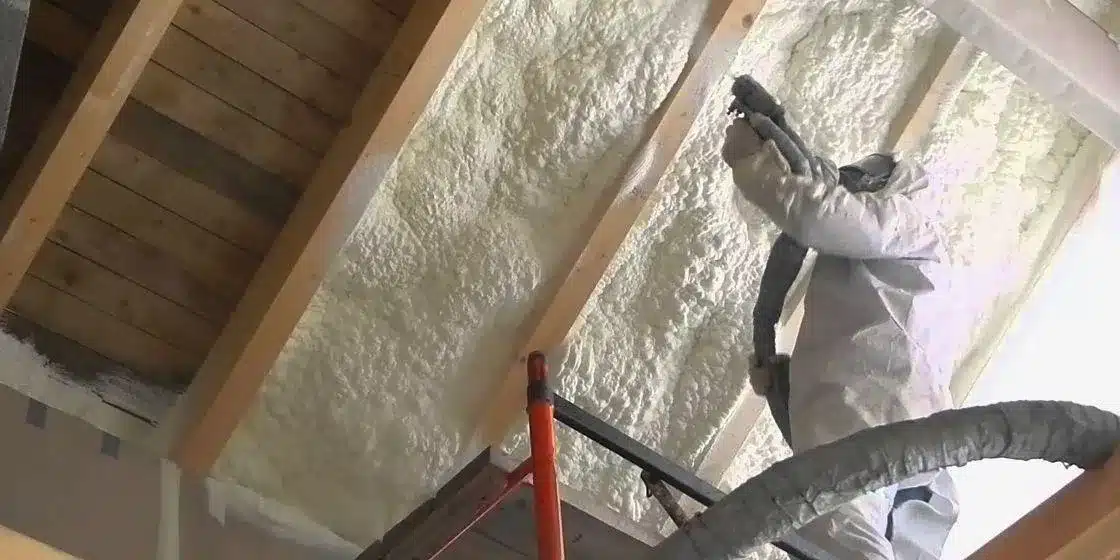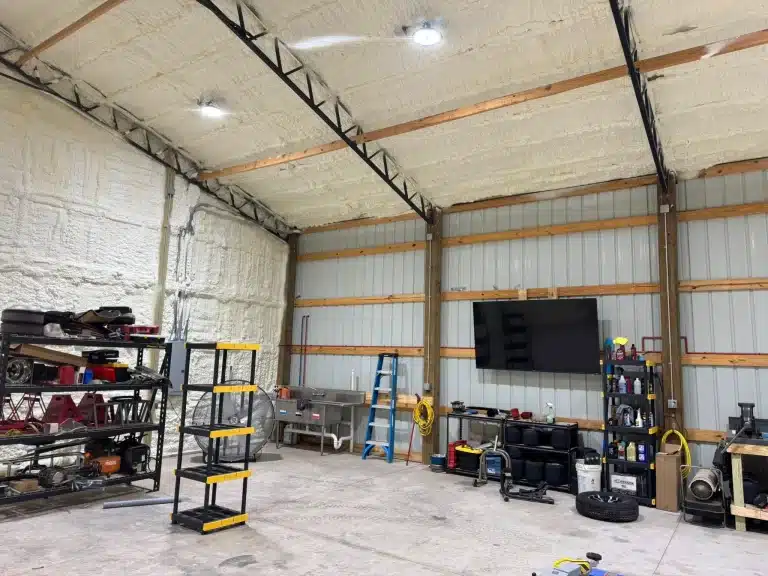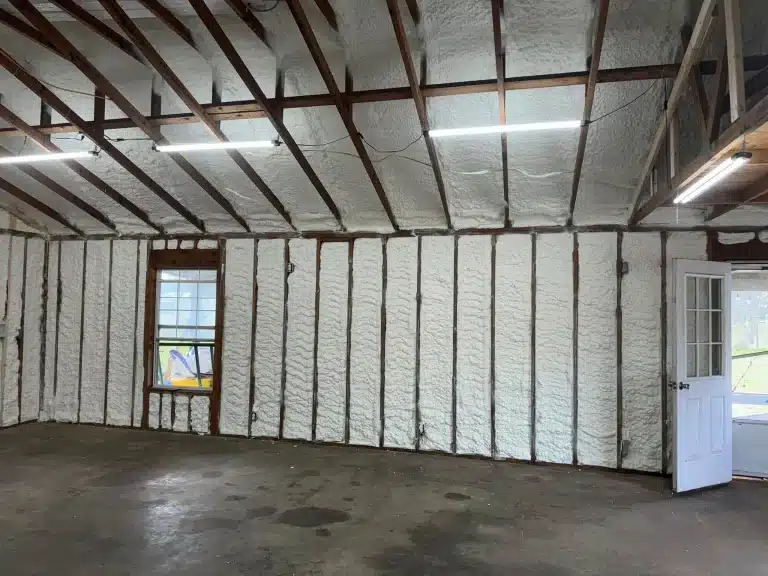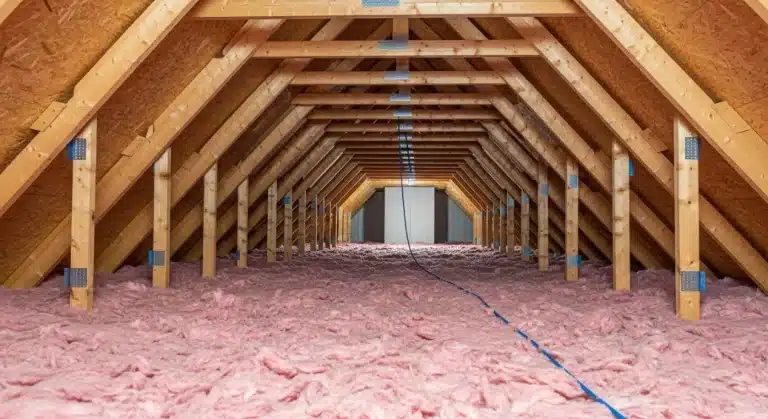Spray foam insulation is a popular choice for sealing gaps, enhancing energy efficiency, and improving indoor comfort. It expands upon application, filling crevices and creating an airtight seal. While it offers excellent thermal resistance and moisture control, it is not suitable for all applications. Knowing where to use or avoid it ensures better results and prevents costly mistakes.
Best Places to Use Spray Foam Insulation
1. Attics and Roof Decks
Attics benefit greatly from spray foam insulation because it prevents heat transfer and air leakage. Sealing the roof deck with closed-cell foam helps regulate indoor temperatures and reduce energy costs. It also prevents moisture buildup that can lead to mold growth.
2. Crawl Spaces and Basements
Applying spray foam in crawl spaces and basements helps prevent dampness and cold drafts. Closed-cell spray foam is particularly effective in these areas because it acts as a moisture barrier, reducing the risk of mold and mildew.
3. Exterior Walls
Spray foam is an excellent choice for exterior walls due to its ability to seal air leaks and improve thermal performance. It conforms to irregular spaces, ensuring better coverage than traditional insulation methods.
4. Gaps Around Windows and Doors
Small gaps and crevices around windows and doors contribute to energy loss. Using spray foam to seal these openings enhances energy efficiency and reduces drafts. However, it is essential to use low-expansion foam to prevent warping or misalignment.
5. Ceilings and Floors Between Levels
Insulating ceilings and floors with spray foam helps with soundproofing and temperature control between different floors. This is particularly useful in multi-story homes and apartments.
6. Pole Barns and Metal Buildings
Spray foam insulation provides excellent coverage for large, open structures like pole barns and metal buildings. It helps maintain stable indoor temperatures and prevents condensation issues that can lead to rust and corrosion.
Where to Avoid Spray Foam Insulation
1. Areas with Electrical Wiring Boxes
Spray foam should not be applied directly inside electrical boxes, as it can expand and interfere with wiring connections. Over-insulating electrical components can also create fire hazards.
2. Enclosed Spaces Without Proper Ventilation
Applying spray foam in completely enclosed areas without proper ventilation can trap moisture, leading to wood rot and mold. Spaces like old walls with existing insulation may not be suitable unless properly assessed.
3. Open-Cell Foam in Below-Grade Areas
While closed-cell spray foam works well in basements and crawl spaces, open-cell foam is not ideal for below-grade applications. Open-cell foam absorbs moisture, which can contribute to mold and structural issues in damp environments.
4. Areas Exposed to High Heat
Spray foam insulation should not be applied near high-heat sources such as chimneys, recessed lighting, or furnace exhaust vents. Heat exposure can degrade the foam over time and pose fire risks.
5. Historic or Older Homes with Breathable Walls
Some historic homes rely on breathable walls to manage moisture naturally. Sealing them with spray foam can trap moisture and lead to long-term structural problems.
6. Roofing Applications Without Proper Evaluation
While spray foam can be applied to roofing systems, improper installation can lead to trapped moisture and premature roof failure. Always consult a professional before using it on roofs.
Professional Application Matters
Applying spray foam insulation requires precision to avoid gaps, over-expansion, or improper curing. Hiring experienced professionals ensures a seamless application that maximizes energy efficiency and longevity.
Read more about our successful projects in this press release, showcasing how expert installation ensures optimal insulation performance and energy savings.
Looking for expert insulation services? Prestige Insulation Solutions provides professional spray foam installation for homes and commercial buildings. Contact us at (850) 429-4969 or email us at [email protected] for a consultation.
Frequently Asked Questions
1. How long does spray foam insulation last?
Spray foam insulation can last 20 to 30 years or more when properly installed and maintained.
2. Can I install spray foam insulation myself?
While DIY kits are available, professional installation ensures better coverage, safety, and compliance with building codes.
3. Does spray foam insulation help with soundproofing?
Yes, both open-cell and closed-cell spray foam provide sound-dampening properties, though open-cell is more effective for noise reduction.
4. Is spray foam insulation safe?
Once fully cured, spray foam is safe. However, proper ventilation and protective gear are necessary during installation due to chemical off-gassing.
5. Will spray foam insulation make my home airtight?
Yes, spray foam significantly reduces air leaks, improving energy efficiency. However, mechanical ventilation may be needed to maintain indoor air quality.
6. Can spray foam be removed if needed?
Yes, but removal can be difficult and may require cutting or scraping the foam from surfaces.
7. What is the difference between open-cell and closed-cell spray foam?
Open-cell foam is softer and provides soundproofing, while closed-cell foam is denser, offers better insulation, and acts as a moisture barrier.
8. How much does spray foam insulation cost?
The cost varies based on area size and foam type. Professional consultation helps determine an accurate estimate.
9. Does spray foam insulation add structural strength?
Closed-cell spray foam can enhance structural integrity due to its rigid nature, making it beneficial for walls and roofing systems.
10. Can spray foam insulation prevent mold?
Yes, closed-cell spray foam resists moisture, reducing the likelihood of mold growth in insulated areas.






